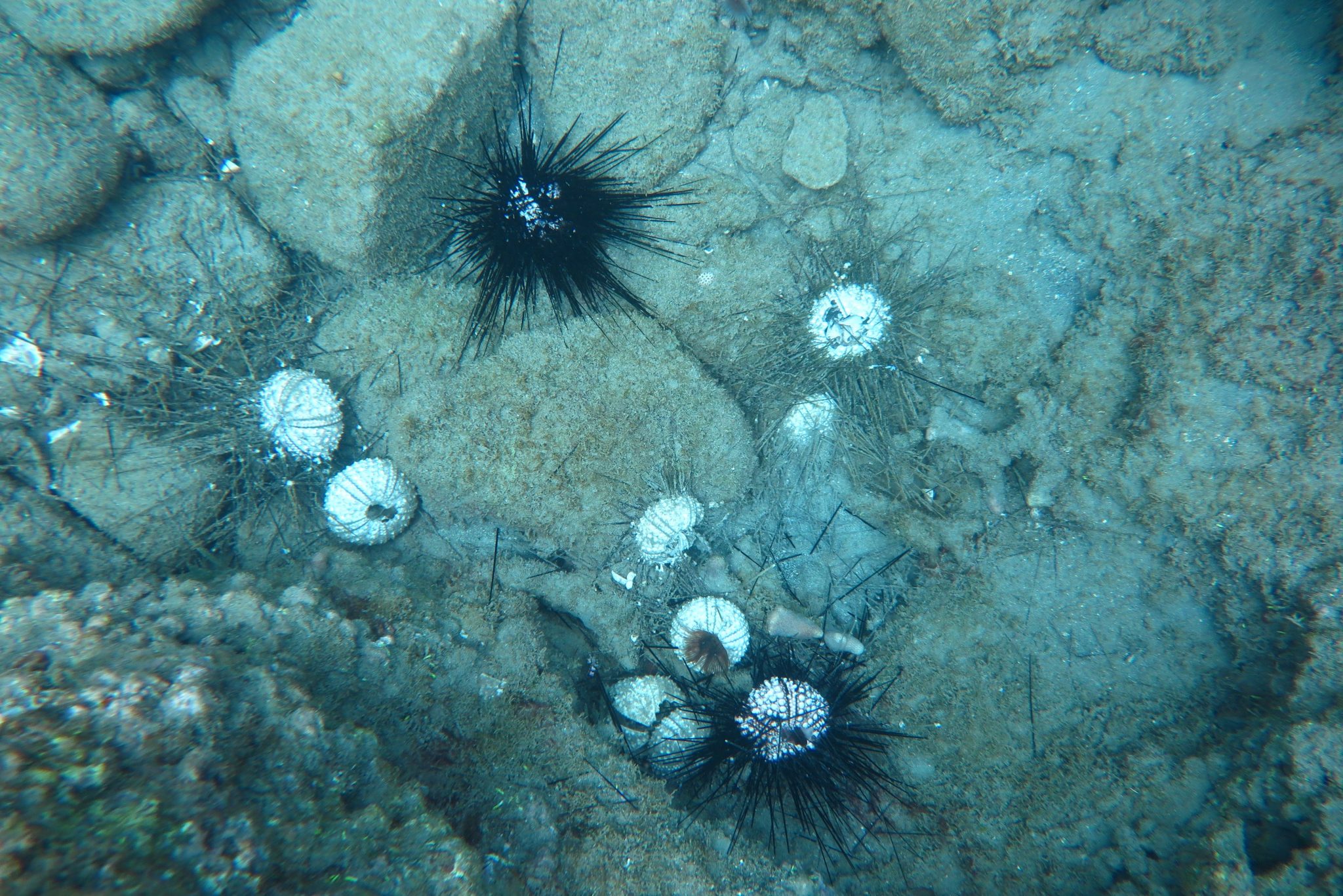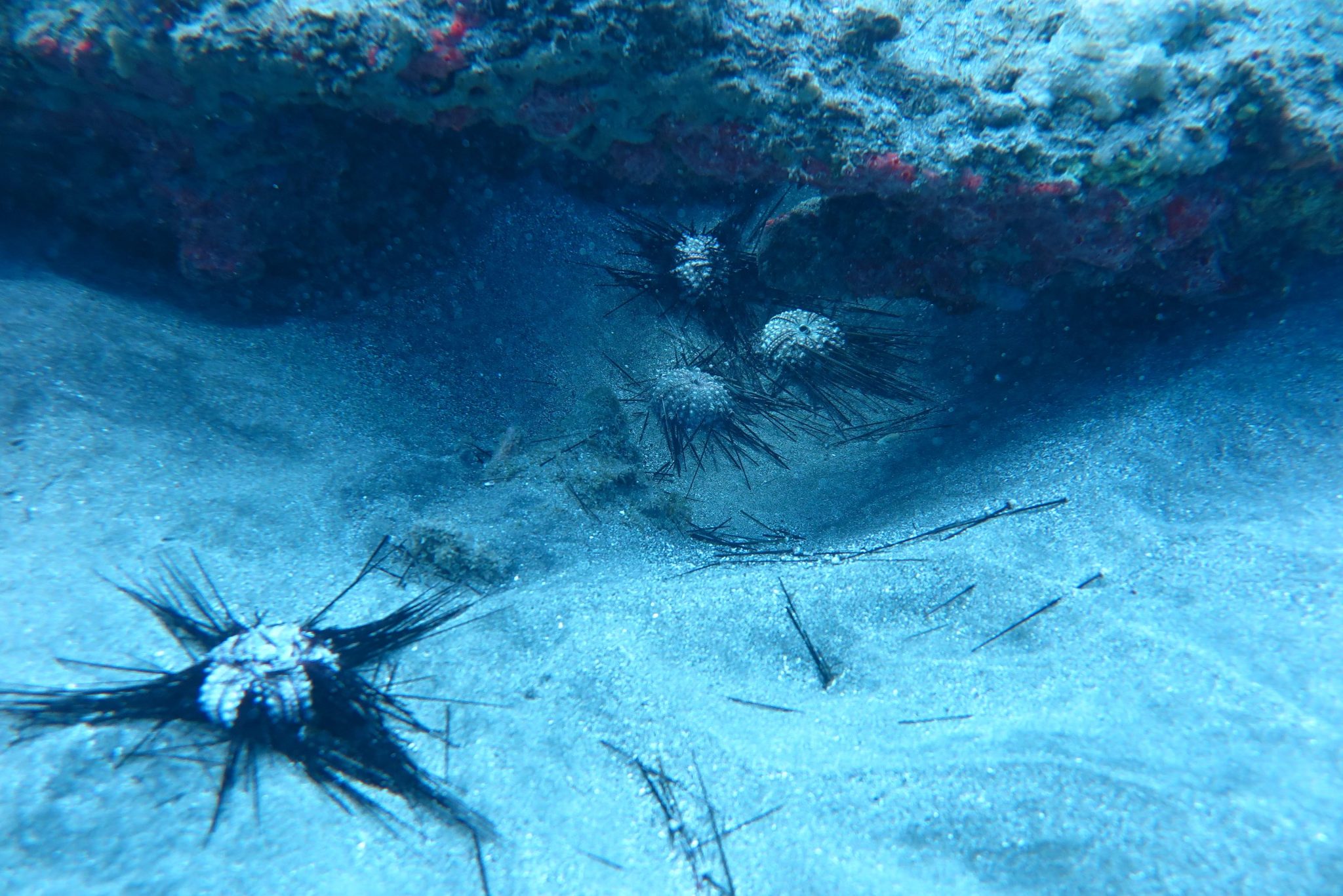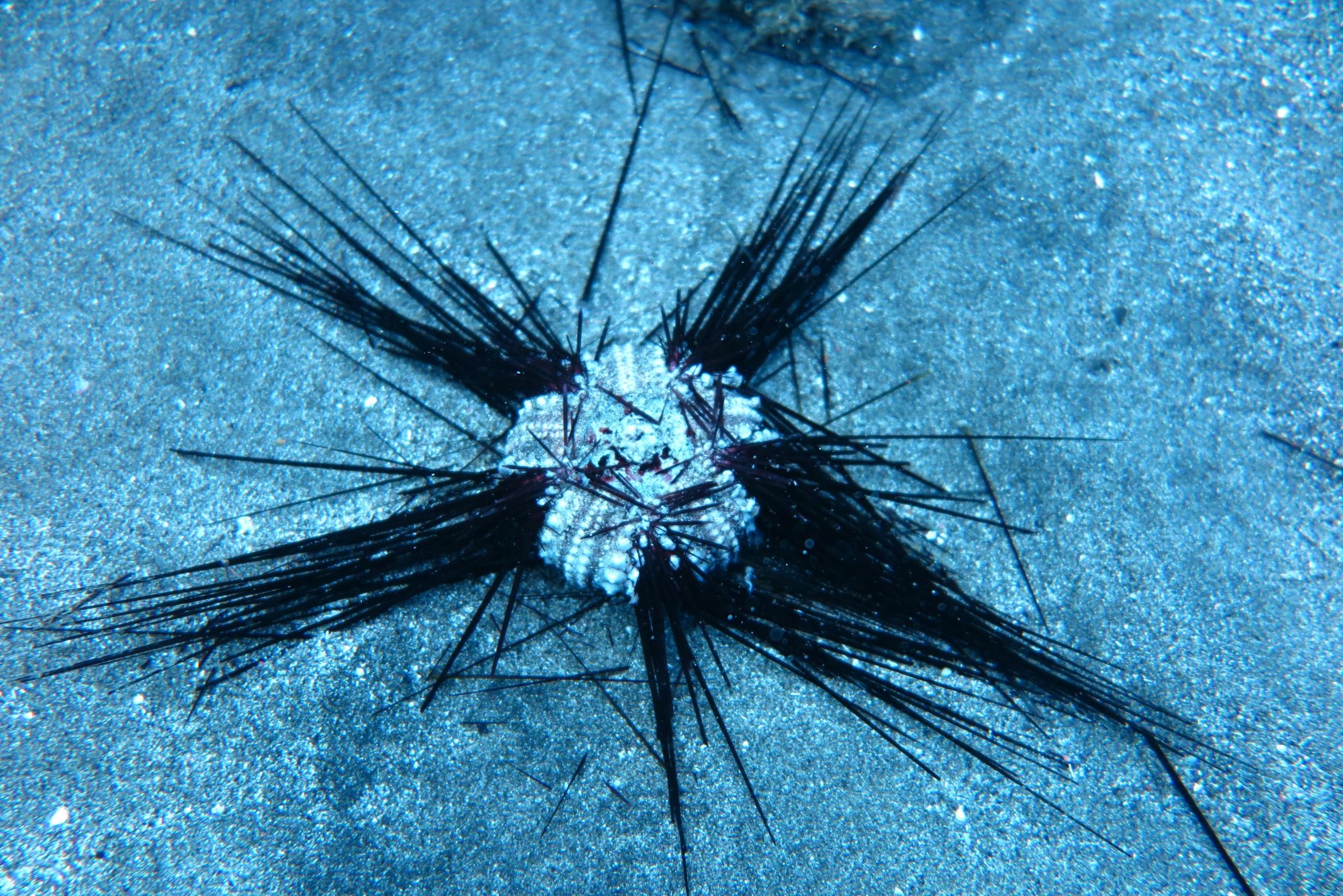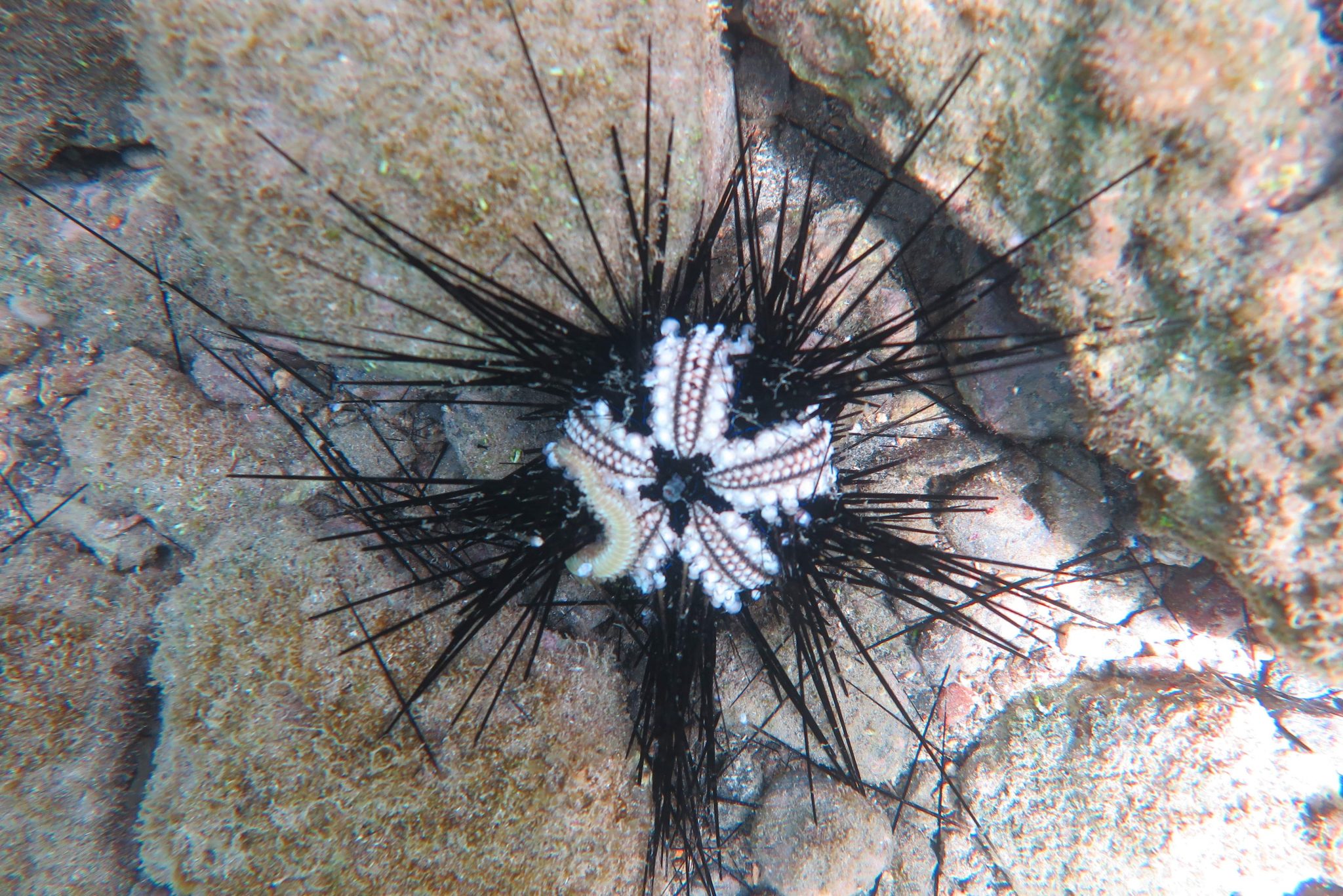Cayman: Diadema in Distress

Diadema antillarum, also known as the long-spine sea urchin, is reportedly experiencing yet another high mortality event throughout the Caribbean, with reports originating from St. Thomas USVI in early February, Jamaica in early March, and Mexico, Dominica and St. Vincent in the past few weeks. A collaborative region-wide effort – the Diadema Response Network – has quickly formed to track and investigate the cause of this Diadema mortality event.


Senior Marine Researcher at the Cayman Islands Department of Environment, Dr. Croy McCoy, explained that sea urchins, more so the long-spine sea urchins, are considered a “keystone grazer” tasked with controlling algae growth on our reefs. “Long-spine sea urchins play an important role in removing algae and maintaining the health of our coral reefs ecosystem. They are “the lawnmowers of our coastal seas,” clearing real estate so that other organisms, like baby corals, can attach themselves and grow.”
In 1982-1983, in the western Atlantic and Caribbean basin, the long-spine sea-urchin Diadema antillarum suffered from a major die-off suddenly with no definitive cause of the mortality. The population is still struggling to recover, reaching less than 20% of its prior population status. Dr. McCoy said, “It is sad to see yet another high mortality event in the Caribbean region of this critically important urchin for the ecological function of our coral reefs. Furthermore, the reported rate at which large numbers of these urchins are now dying resembles the mass mortality 40 years ago.”


Thankfully, the Cayman Islands have not reported any unusual deaths of these sea urchins yet. However, it overlaps another grave threat to our coral reefs that made its way across the Caribbean since first reported in Florida in 2014. Stony Coral Tissue Loss Disease (SCTLD) is an aggressive coral disease affecting 20+ species of our hard corals and kills 60-100% of some coral species. This disease was first reported on the coral reefs of Grand Cayman in June 2020 and in just over a year, it spread around the entirety of Grand Cayman. Thankfully, it has not been observed on the coral reefs of Little Cayman or Cayman Brac.
SCTLD Response Team Coordinator, Tammi Warrender explains how the community can help proactively to address the threat to our local Diadema populations.


“Reports from the public are essential so that we can respond immediately to this threat and collect, organize and share data with the wider scientific community to help find possible solutions. The most important thing the community can do now is to report “what, when and where” they see anything unusual, particularly a dead or a group of dead sea urchins. Reports of healthy sea urchins will also be useful for our response.”
Sick or dead urchins may be unable to attach by their feet and be floating and/or have lost spine movement and/or spines, while dead urchins may have the skeleton exposed with loss of spines.
Divers, snorkelers, boaters, fishers and beach walkers are encouraged to download our EpiCollect app ”Urchin Health Cayman” to submit reports quickly and efficiently to the DoE. The public may also WhatsApp or text a report to 926-0680 or email [email protected].
IMAGES: K. Kitson-Walters





